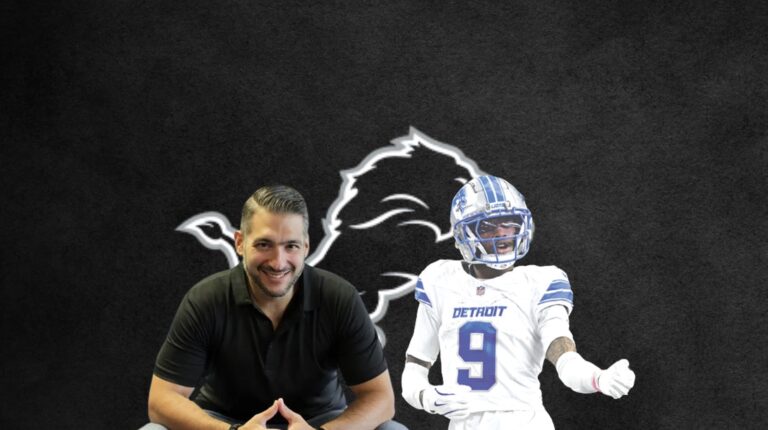Lions WR Faces Uncertain Future Despite 1,000-Yard Breakout in 2024.
Is a Breakout Year Enough?
After finally living up to the hype with a 1,000-yard season in 2024, Jameson Williams appeared ready to solidify his place in Detroit’s offensive core. But the excitement may be short-lived. With cap pressures mounting and the Lions drafting wideout Isaac TeSlaa in the third round of the 2025 NFL Draft, local sports voice Mike Valenti is asking a pointed question: Is Jameson Williams already being phased out of the team’s long-term vision?
On 97.1 The Ticket, Valenti didn’t mince words. Connecting Detroit’s aggressive move to draft TeSlaa and GM Brad Holmes’ high praise for the rookie, Valenti posed a tough hypothetical:
“Have they already replaced Jamo and we’re just not paying attention?”
Why the Debate Matters
At first glance, replacing a young speedster coming off a career season sounds irrational. But the numbers—and circumstances—tell a deeper story. Williams is under contract through 2025, but his fifth-year option in 2026 will cost the Lions around $20 million. A long-term deal could climb into the $25–30 million annual range—huge money for a player projected to be third or even fourth in targets behind Amon-Ra St. Brown, Sam LaPorta, and Jahmyr Gibbs.
Detroit’s cap sheet is rapidly filling up. St. Brown, Goff, and Penei Sewell have already signed major extensions, and more young stars will be due for paydays soon. Holmes has consistently emphasized sustainability and positional value, and WR3s—no matter how explosive—aren’t usually luxury items in that philosophy.
Enter Isaac TeSlaa
Detroit didn’t just select TeSlaa—they traded multiple picks to get him. And Holmes didn’t hide his affection for the rookie, calling him his “favorite receiver in the draft.” That level of public backing is rare, especially for a third-rounder.
Valenti laid it out with biting wit:
“Am I gonna pay [Williams] $20 million? Or pay a rookie third-round pick who apparently is the hottest thing since socks on a rooster?”
It’s a punchline, sure—but the logic sticks.
Economics vs. Explosiveness
Williams brings unique value to Detroit’s offense. His straight-line speed forces defenses to stay honest, and his deep threat presence opens up space underneath. But questions remain about his route-running polish and reliability. If TeSlaa—who enters on a four-year, $5 million deal—can offer steadier hands and versatility, the Lions could have a tough financial call to make.
And it’s not just about depth—it’s about identity. If Williams becomes the odd man out, the Lions may be signaling a pivot from flash to function, betting on balance and roster flexibility over high-risk, high-reward speed.
The Road Ahead
Jameson Williams is far from out of the picture. But 2025 may serve as a referendum on his future in Detroit. If he thrives again and climbs the target hierarchy, he’ll force the front office’s hand. If he doesn’t, the Lions have already drafted their Plan B.
Bottom Line:
Mike Valenti’s radio musings may sting for fans who’ve rallied behind Williams. But they reflect a real dilemma for Detroit’s brass. Talent, timing, and team-building rarely align perfectly—and in Williams’ case, the Lions might be planning for what comes next, even while he’s still producing.
In a league that moves fast, the question isn’t whether Jameson Williams can play. It’s whether Detroit will still want to pay him when the bill comes due.
